Ptolemaeus 
Move your mouse over the picture to see the names of the various features.
I start with two small-scale pictures showing the whole grouping of Ptolemaeus, Alphonsus, Arzachel, Hipparchus, and Albetagnius. This is followed by a more-detailed picture of Ptolemaeus, Alphonsus, and Arzachel. Finally a detailed picture of Ptolemaeus.
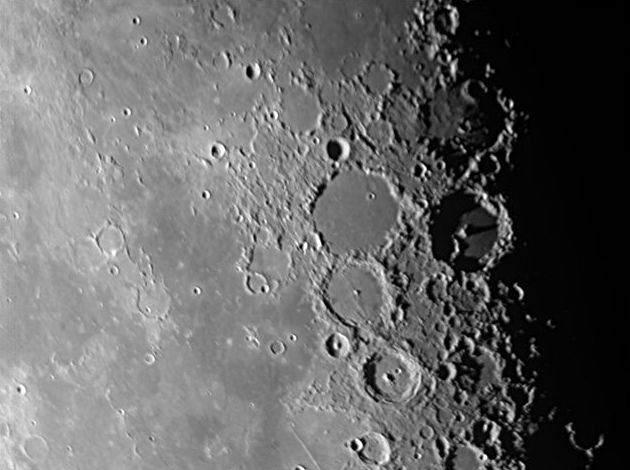
|
Here I present two pictures of the same area, for the sake of the technically minded, to illustrate the effects of gamma during capture. The upper picture was taken with a high gamma, the lower with a low gamma. You can see how the low gamma has brought out the detail in the maria on the left of the picture and the high gamma picture has brought out the details in the craters on the right. In particular, the high-gamma picture reveals the beautifully pointed shadow of the central peak in Albategnius. Here is a section from a closer view.
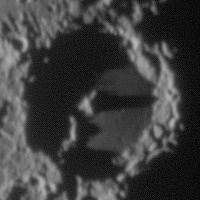 (If you have a rather dark monitor, the shadow may not be visible on the main picture, so the mouseover for it is an enhanced version to bring out the shadow. The picture below has my normal mouseover.) (If you have a rather dark monitor, the shadow may not be visible on the main picture, so the mouseover for it is an enhanced version to bring out the shadow. The picture below has my normal mouseover.)
These are wide-angled views taken with a 0.33 focal reducer attached to my LX200 and show the lovely grouping of five large craters, on the right, and the northern part of the Mare Nubium, on the left.
They were taken with my LX200 on 14th October 2006 at 03:11 and 03:18 UT when the Moon was 22.3 days old.
Upper picture:
Date and Time: 14th October 2006 03:11 UT
Camera: Atik 1-HS
Telescope: LX200 with 0.33 focal reducer
Capture: K3CCDTools. 100% gamma, 1/250", 22% gain, 622 frames
Processing: Registax. 4 alignment points, 433 frames stacked. Gaussian wavelets 1-2 = 20
Lower picture:
Date and Time: 14th October 2006 03:15 UT
Camera: Atik 1-HS
Telescope: LX200 with 0.33 focal reducer
Capture: K3CCDTools. 0% gamma, 1/100", 15% gain, 609 frames
Processing: Registax. 4 alignment points, 521 frames stacked. Gaussian wavelets 1-2 = 20, histogram 0-200
|
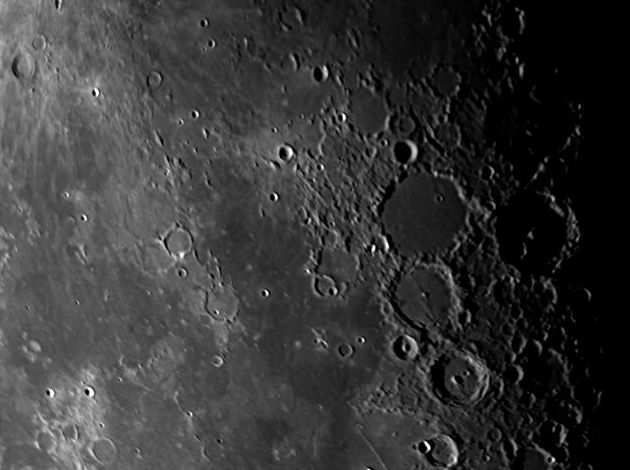
|
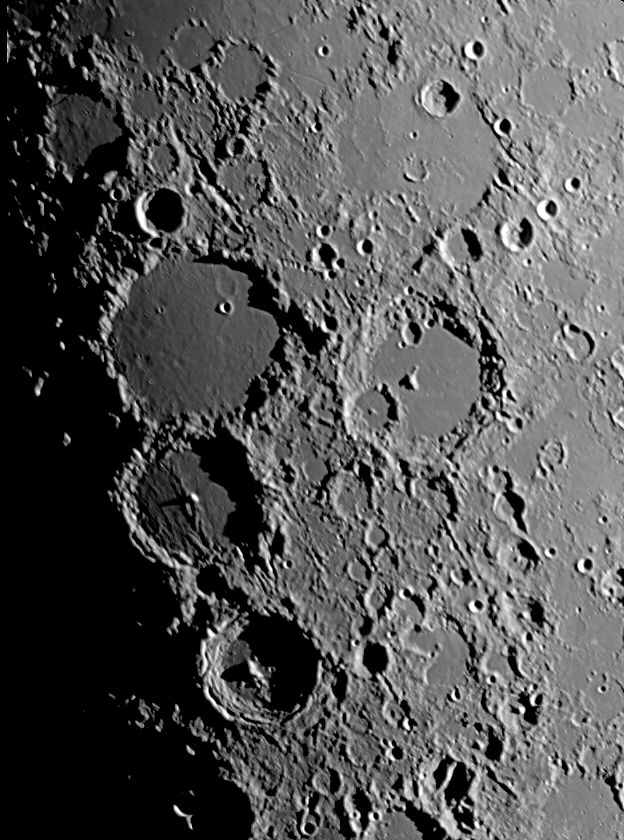
|
A much closer view of this attractive quartet of large craters seen on day 8.4 but with a large westward libration (7° 12'). The picture is a mosaic of three images.
The scale markers are approximately 100 Km north and east.
Date and Time: 26 October 2007 20:14 to 20:19 UT
Camera: Atik 1-HS
Telescope: LX200 at prime focus
Capture: K3CCDTools. High gamma, 1/100", 19% gain
Processing: Registax. Wavelet 1-2 = 10. PhotoImpact. Auto-process, unsharp mask 30,1 |
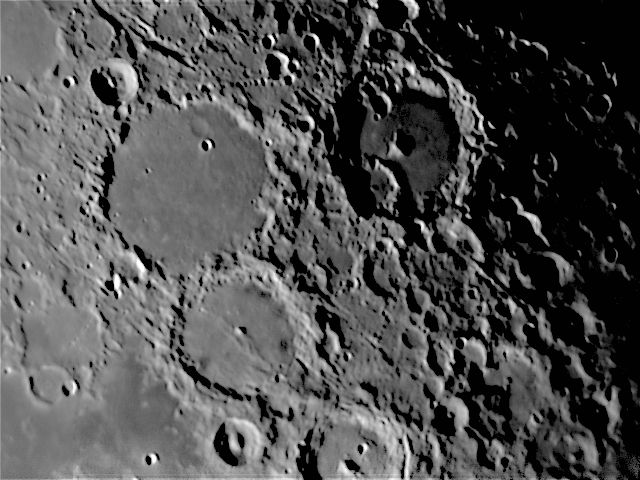
|
Ptolemaeus (158 Km in diameter) has a remarkably flat floor and no central mountain, situated in a very rugged part of
the lunar surface. Nevertheless it is believed to be about 4,000 million years old. Albategnius (139 Km in diameter), however,
is only 3,900 million years old, along with Alphonsus (121 Km in diameter). Arzachel (100 Km in diameter) is slightly younger at 3,800 million years.
The picture was taken with my LX200 on 17th October 2003 at 02:20 UT when the Moon was 20.8 days old.
Date and Time: 17th October 2003 02:20 UT
Camera: ToUcam 740K
Telescope: LX200
Capture: K3CCDTools. 50% gamma, 1/50", 20% gain, 314 frames
Processing: Registax. 246 frames stacked. Wavelet 1,2,6 = 5 |
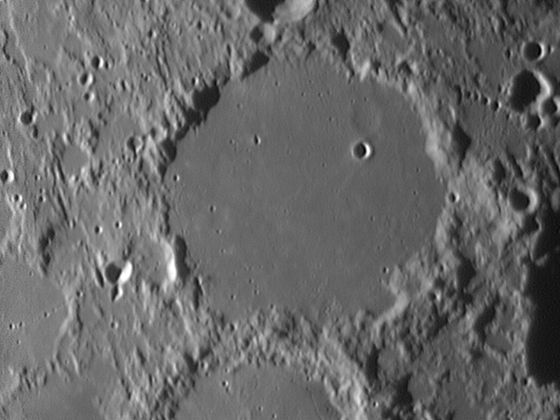
|
And here is a close-up picture of Ptolemaeus under similar lighting. Its
walls rise to over 2000 metres above the floor which is relatively smooth. The small crater within it,
which I have labelled 'A' after Hatfield, is called Ammonius in the VMA.
The picture was taken with a ToUcam attached to my LX200 with a X2 adaptor lens on 6th September 2004
when the Moon was 21.8 days old.
Date and Time: 6th September 2004 04:35 UT
Camera: ToUcam 740K
Telescope: LX200 with X2 lens
Capture: K3CCDTools. High gamma, 1/50", 31% gain, 307 frames
Processing: Registax. 140 frames stacked. Wavelet 1,2 = 10 |
Home Back to SW Quadrant

